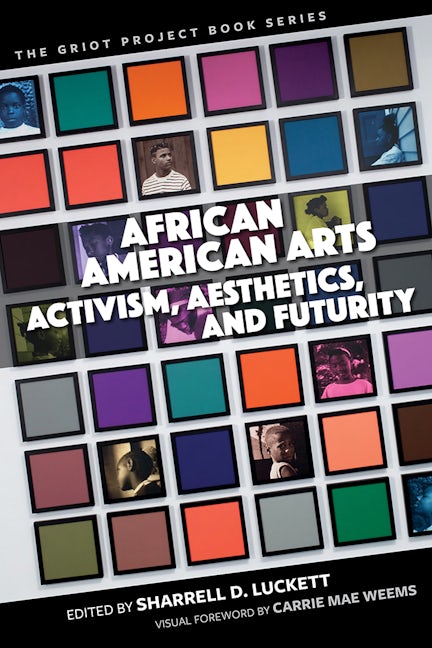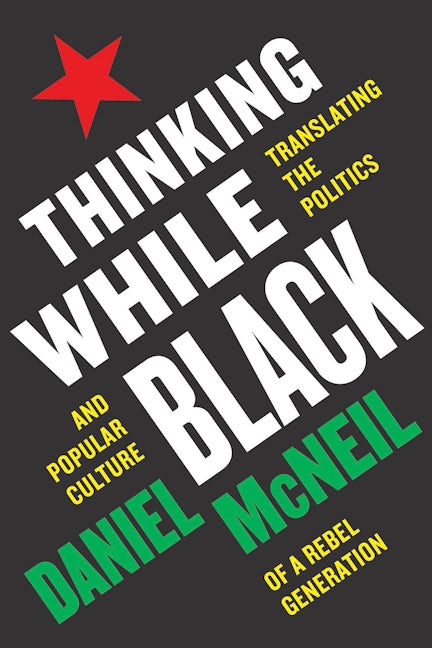Signaling such recent activist and aesthetic concepts in the work of Kara Walker, Childish Gambino, BLM, Janelle Monáe, and Kendrick Lamar, and marking the exit of the Obama Administration and the opening of the National Museum of African American History and Culture, this anthology explores the role of African American arts in shaping the future, and further informing new directions we might take in honoring and protecting the success of African Americans in the U.S. The essays in African American Arts: Activism, Aesthetics, and Futurity engage readers in critical conversations by activists, scholars, and artists reflecting on national and transnational legacies of African American activism as an element of artistic practice, particularly as they concern artistic expression and race relations, and the intersections of creative processes with economic, sociological, and psychological inequalities. Scholars from the fields of communication, theater, queer studies, media studies, performance studies, dance, visual arts, and fashion design, to name a few, collectively ask: What are the connections between African American arts, the work of social justice, and creative processes? If we conceive the arts as critical to the legacy of Black activism in the United States, how can we use that construct to inform our understanding of the complicated intersections of African American activism and aesthetics? How might we as scholars and creative thinkers further employ the arts to envision and shape a verdant society?
Contributors: Carrie Mae Weems, Carmen Gillespie, Rikki Byrd, Amber Lauren Johnson, Doria E. Charlson, Florencia V. Cornet, Daniel McNeil, Lucy Caplan, Genevieve Hyacinthe, Sammantha McCalla, Nettrice R. Gaskins, Abby Dobson, J. Michael Kinsey, Shondrika Moss-Bouldin, Julie B. Johnson, Sharrell D. Luckett, Jasmine Eileen Coles, Tawnya Pettiford-Wates, Rickerby Hinds.
Published by Bucknell University Press. Distributed worldwide by Rutgers University Press.
List of Illustrations
Visual Foreword: Carrie Mae Weems
Series Editor Foreword: Carmen Gillespie
Introduction: African American Arts in Action
Sharrell D. Luckett
Bodies of Activism
Chapter 1: Trans Identity as Embodied Afrofuturism
Amber Johnson
Chapter 2: Designing Our Freedom: Toward a New Discourse of Fashion as a Strategy for Self
Liberation
Rikki Byrd
Chapter 3: Pearl Primus' Choreo-Activism: 1943-1949
Doria E. Charlson
Chapter 4: Performing New Nationalism/Performing a Living Culture: Josefina Báez’s
"Dominicanish"
Florencia V. Cornet
Chapter 5: Ethnicity, Ethicalness, Excellence: Armond White’s All-American Humanism
Daniel McNeil
Chapter 6: Race and History on the Operatic Stage: Caterina Jarboro Sings Aida
Lucy Caplan
Music & Visual Art as Activism
Chapter 7: “I Am Basquiat”: Tracing Jean-Michel Basquiat's Alterity and Activism in
Paint and Performance
Genevieve Hyacinthe
Chapter 8: “I Luh God”: Erica Campbell, Trap Gospel and the Moral Mask of Language
Discrimination
Sammantha McCalla
Chapter 9: The Hidden Code of the Kongo Cosmogram in African American Art and Culture
Nettrice R. Gaskins
Chapter 10: From Baldwin to Beyoncé: Exploring the Responsibility of the Artist in Society--- Re-envisioning the Black Female Sonic Artist as Citizen
Abby Dobson
Chapter 11: Slaying “Formation”: A Queering of Black Radical Tradition
J. Michael Kinsey
Institutions of Activism
Chapter 12: Centering Blackness Through Performance in Every 28 Hours
Shondrika Moss-Bouldin
Chapter 13: Dancing for Justice Philadelphia: Embodiment, Dance, and Social Change
Julie B. Johnson
Chapter 14: A Conversation with Freddie Hendricks of the Freddie Hendricks Youth Ensemble
of Atlanta
Sharrell D. Luckett
Chapter 15: The Conciliation Project as a Social Experiment: Behind the Mask of Uncle Tomism
and the Performance of Blackness
Jasmine Coles & Tawnya Pettiford-Wates
Afterword: Blackballin'
A play by Rickerby Hinds
Acknowledgments
Index
About the Contributors










